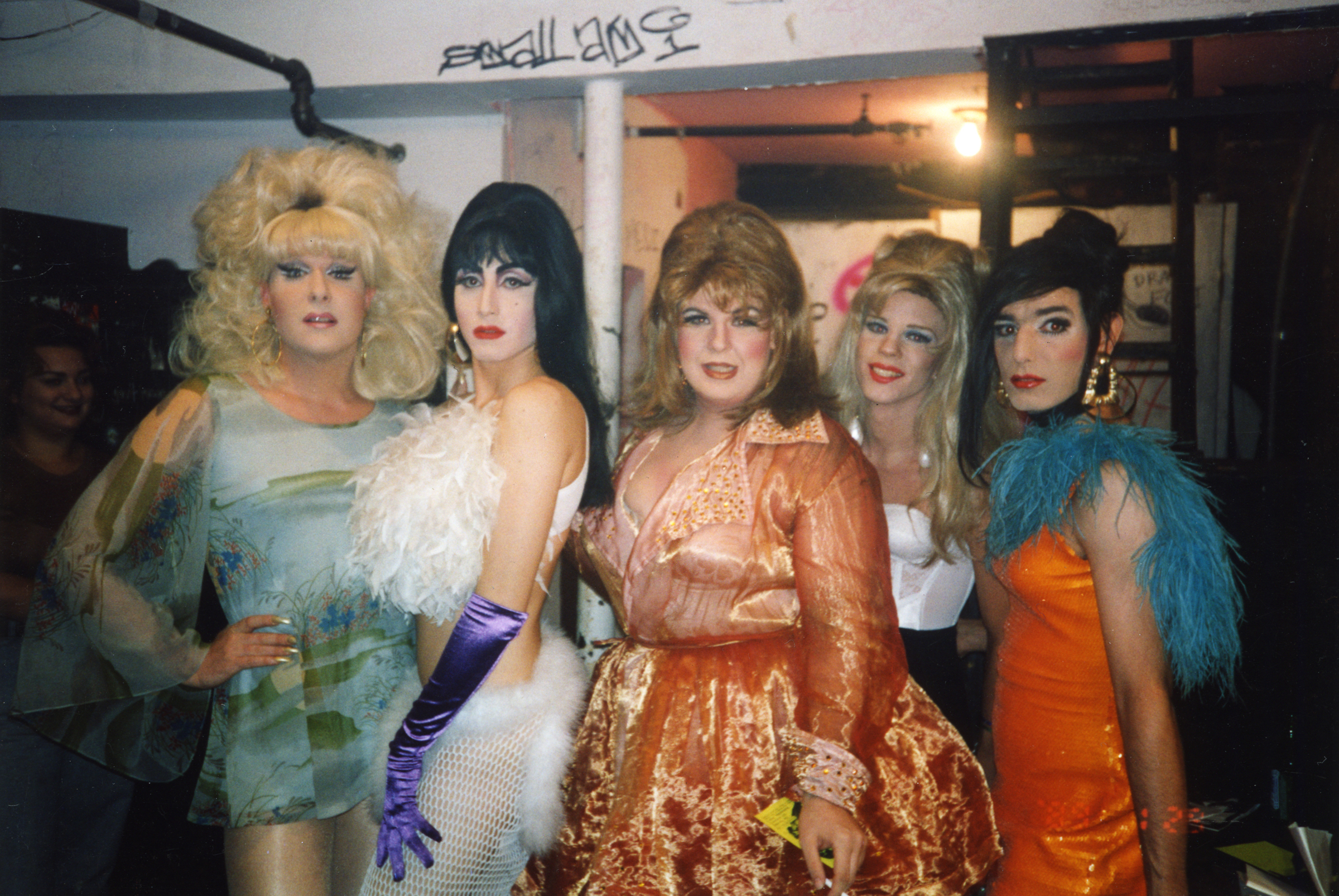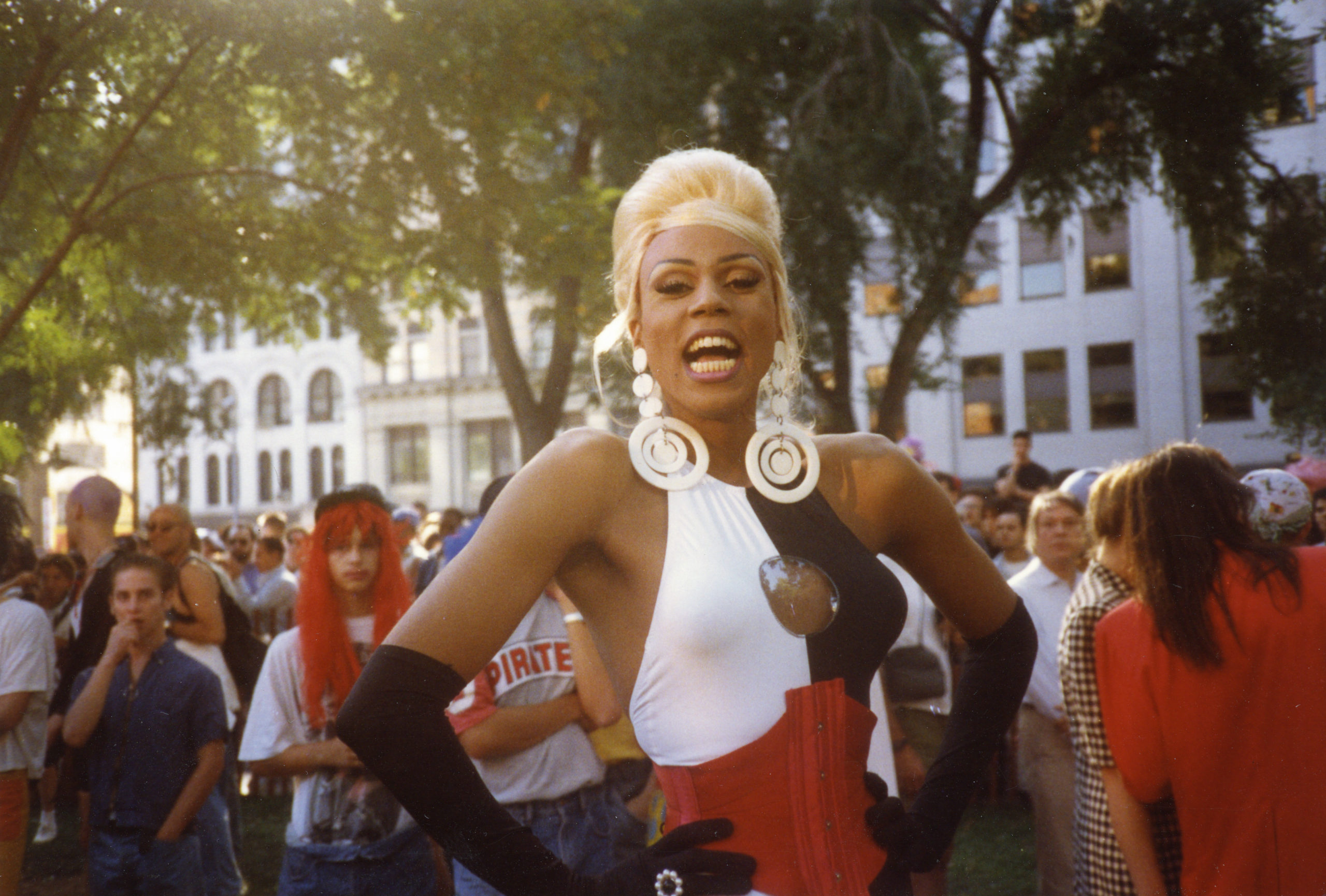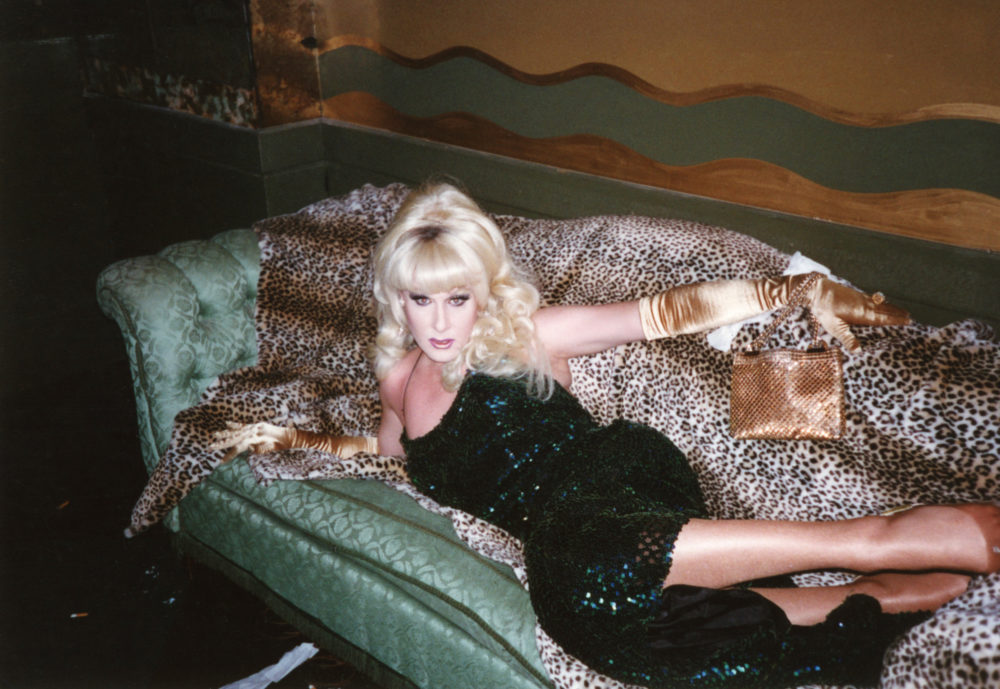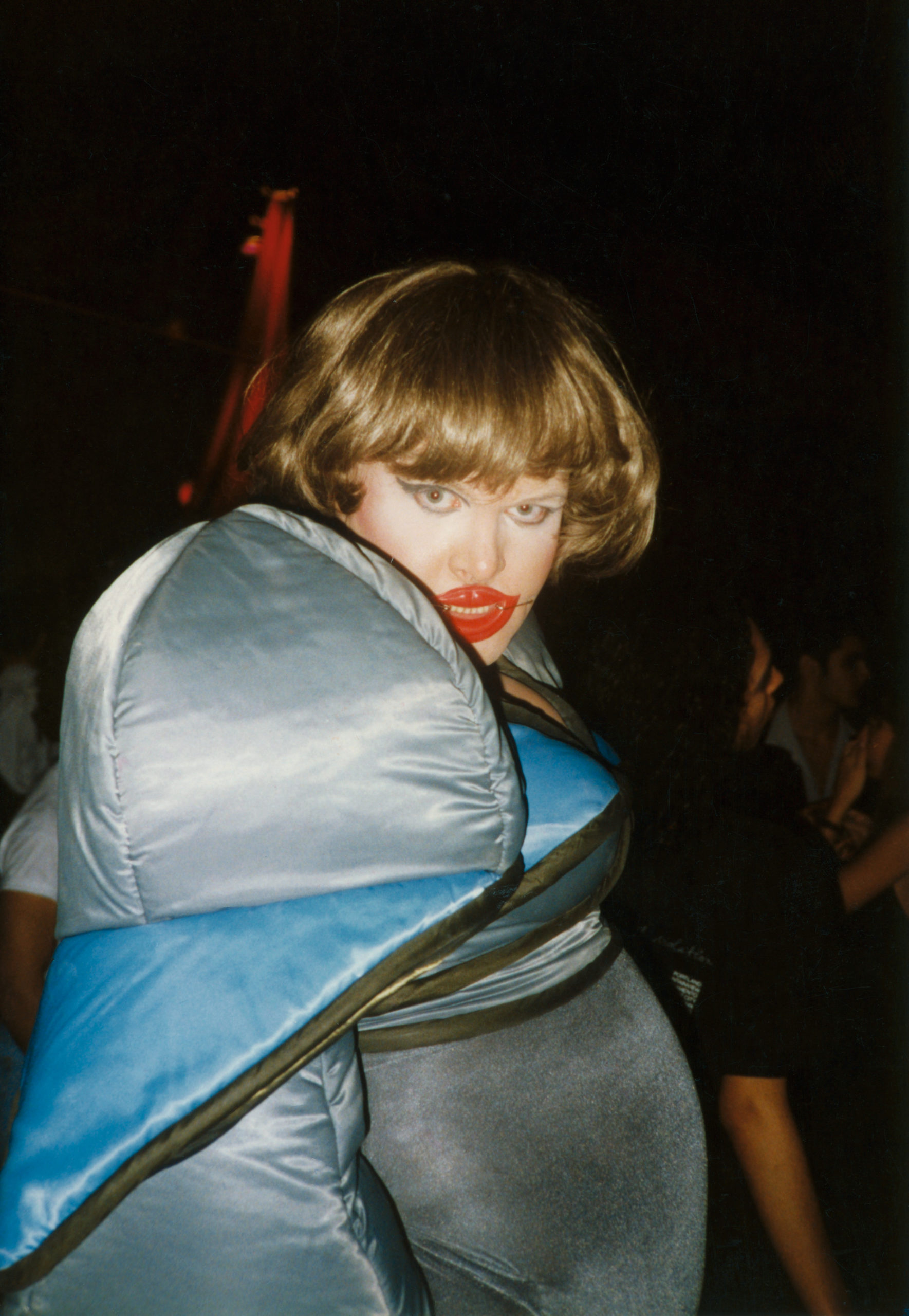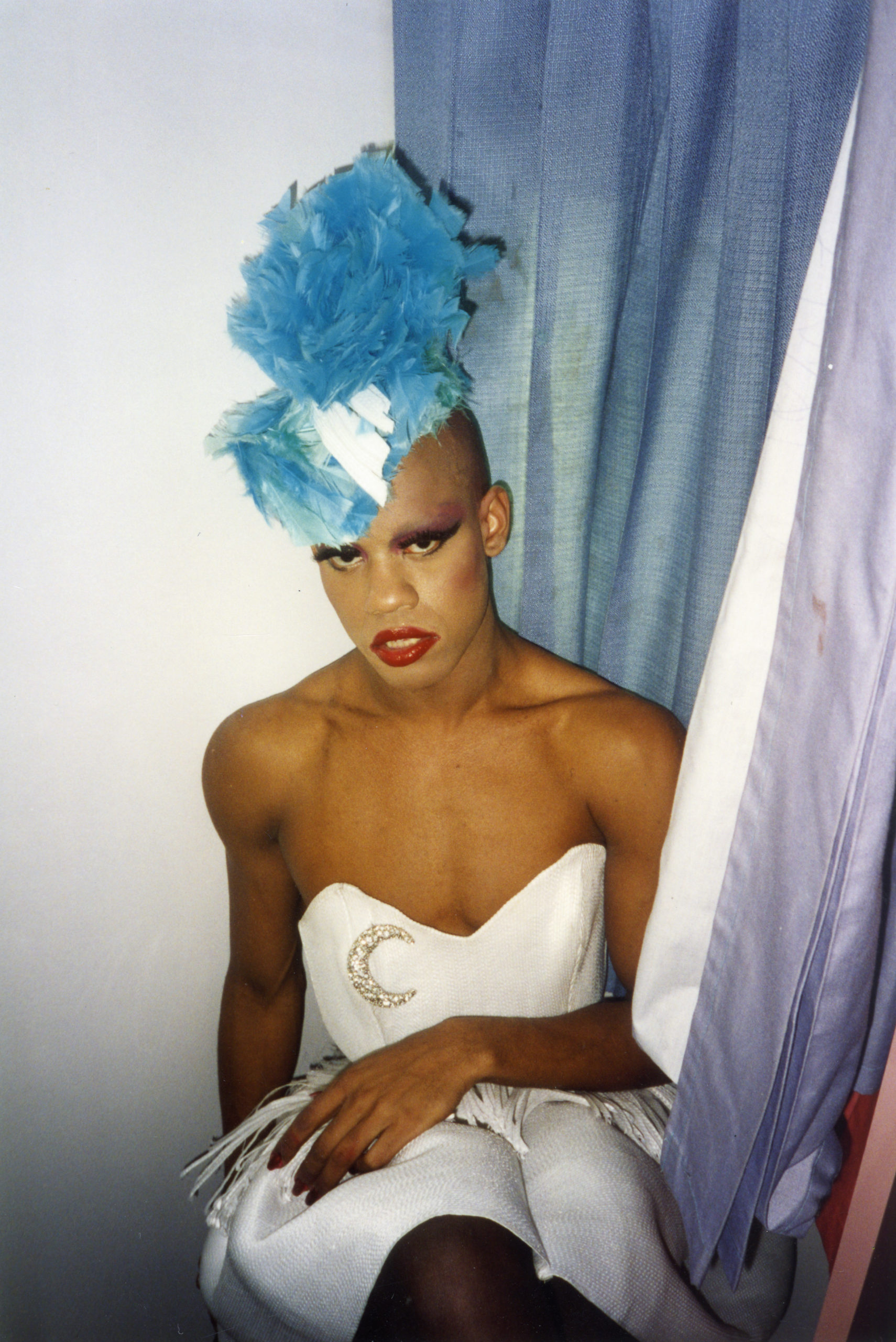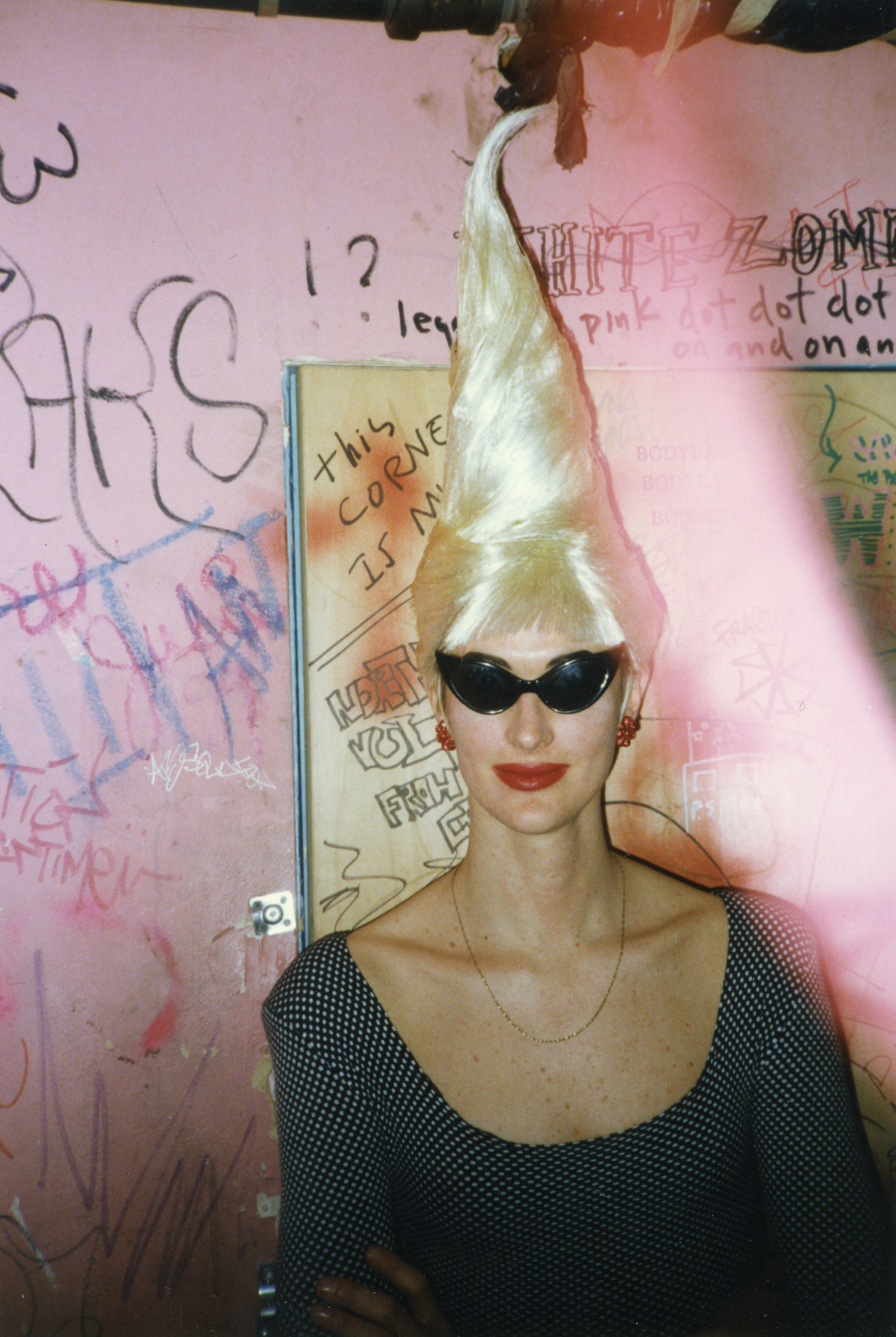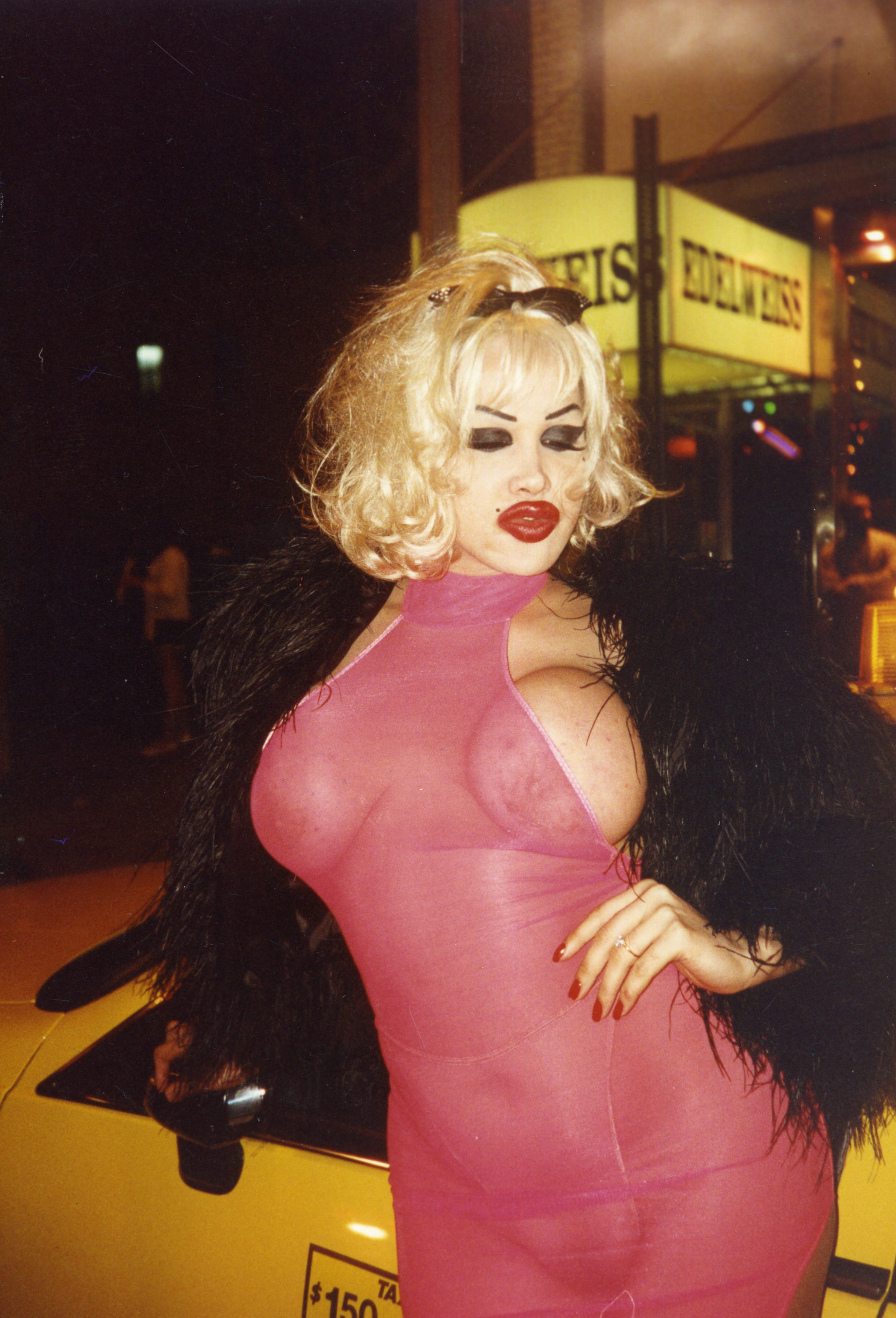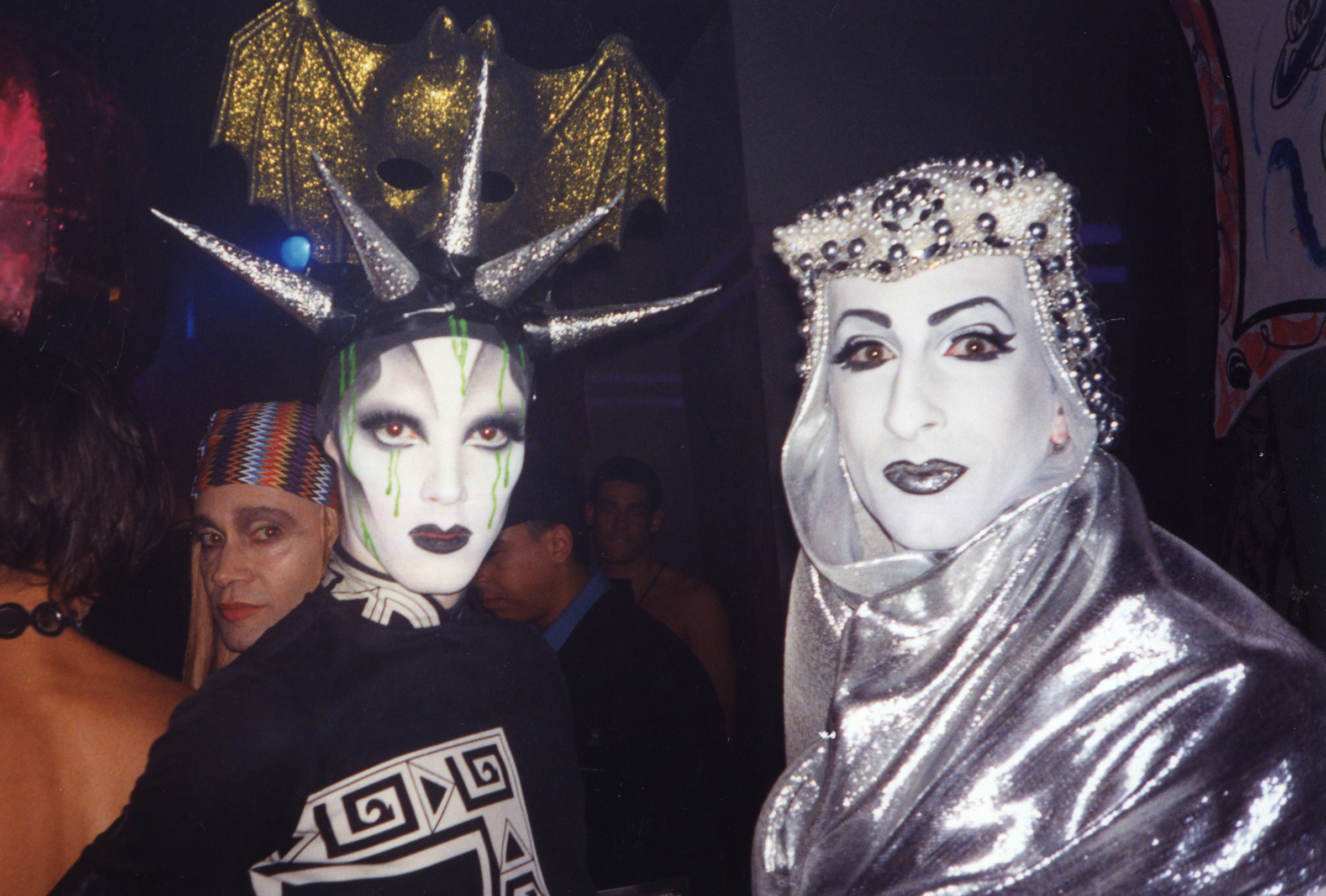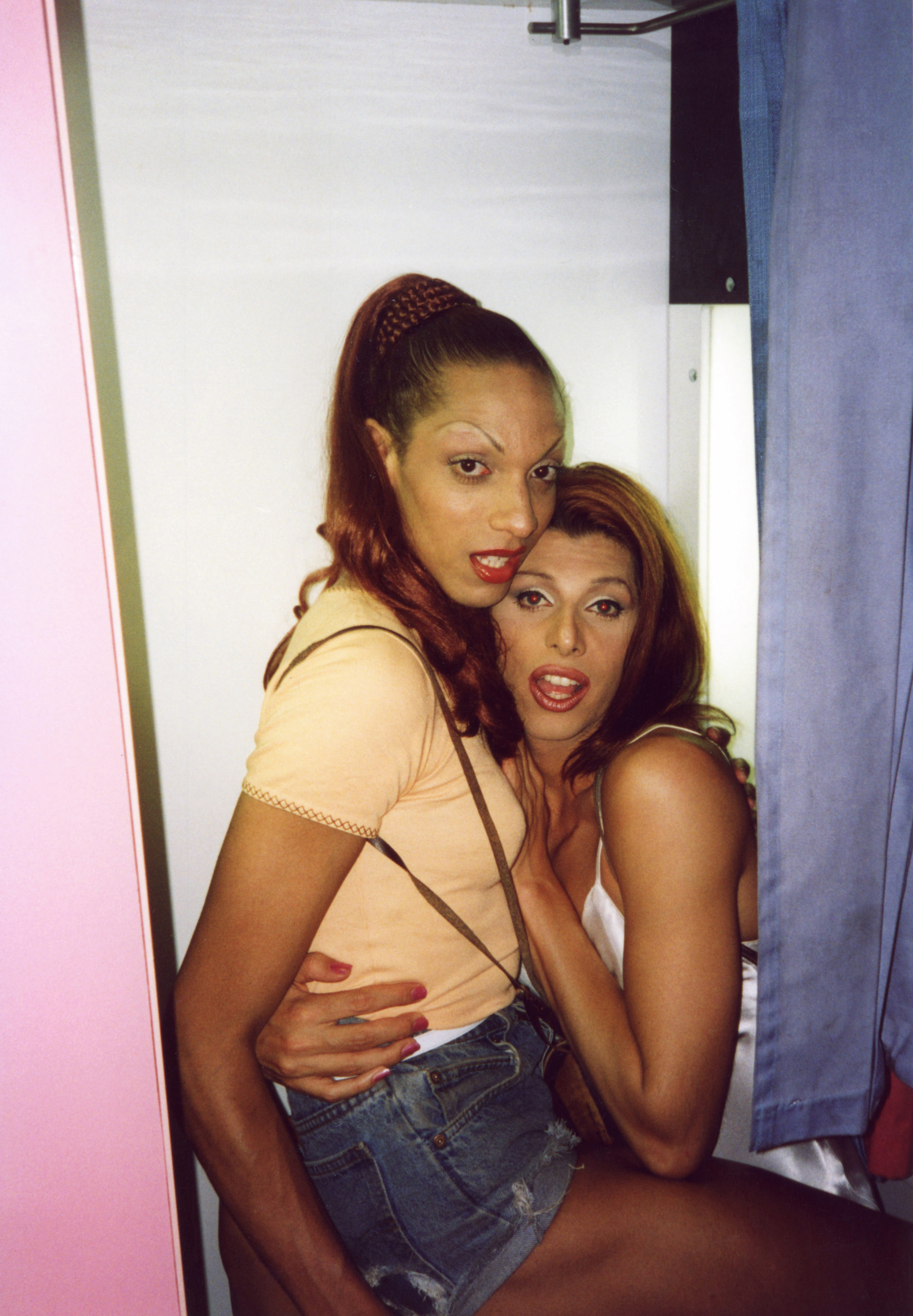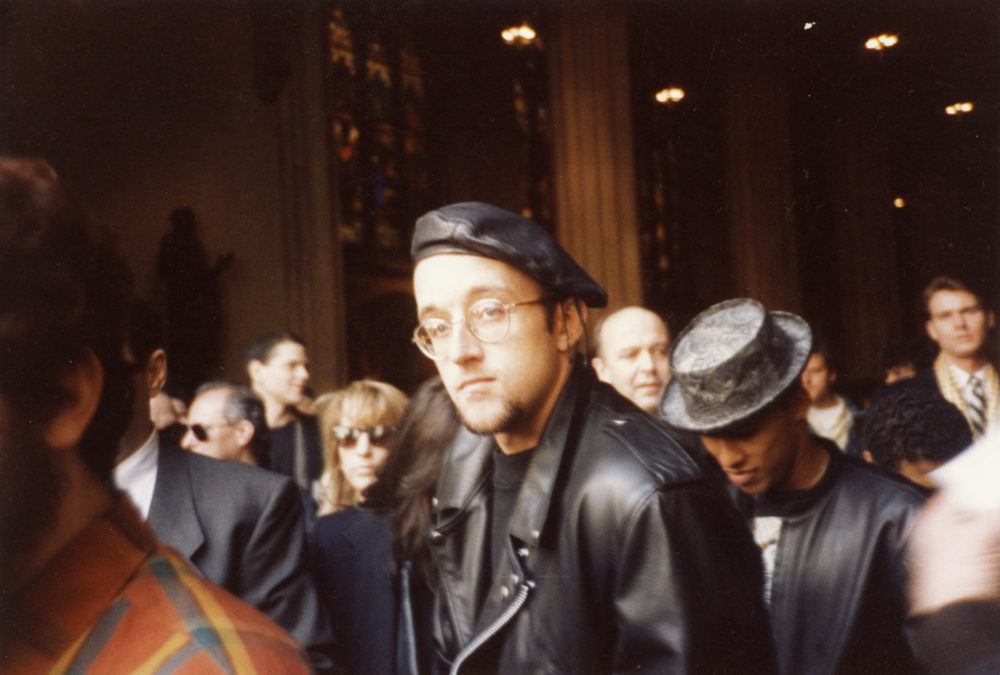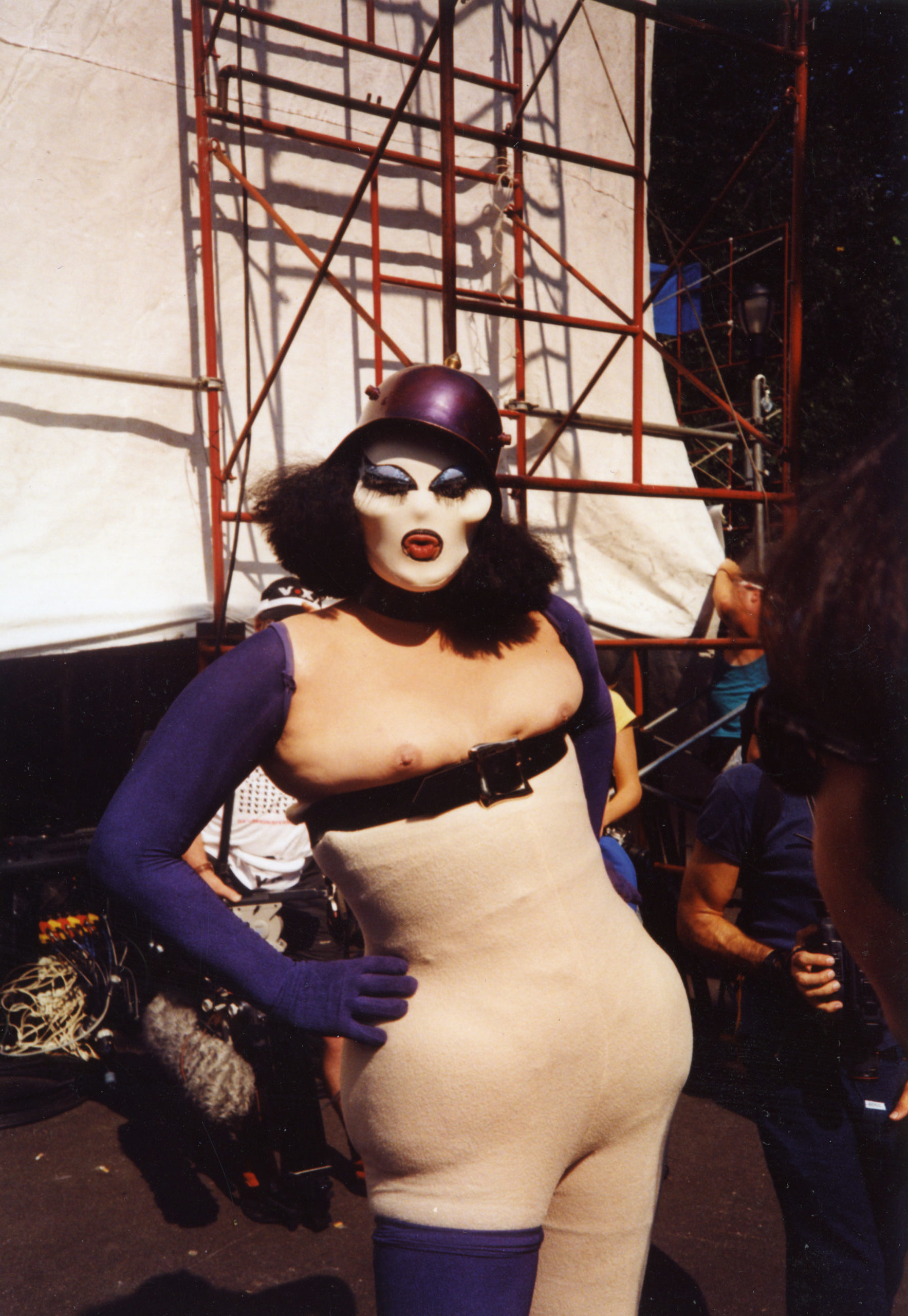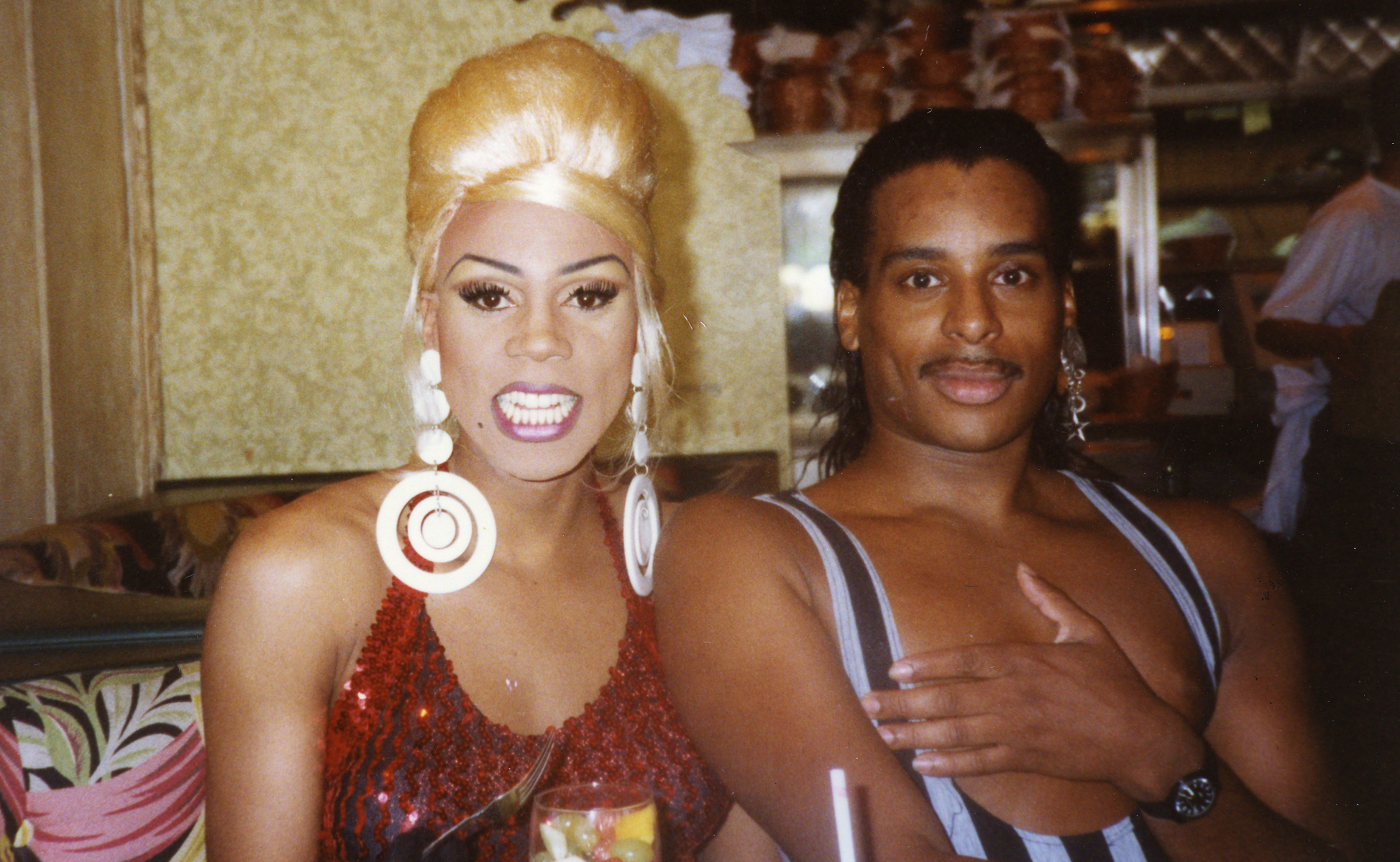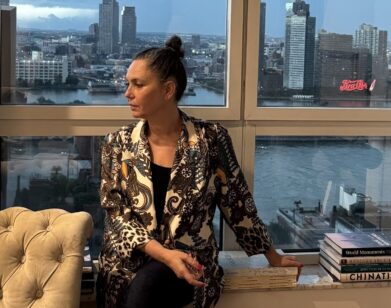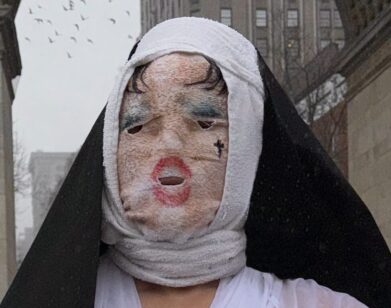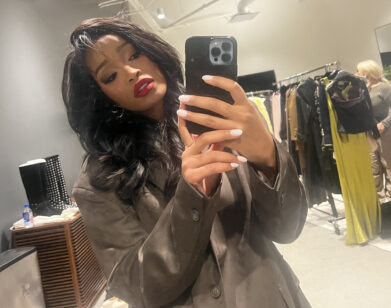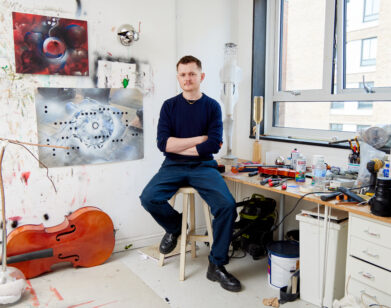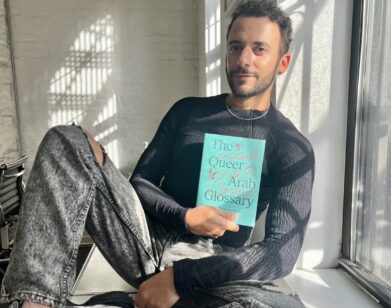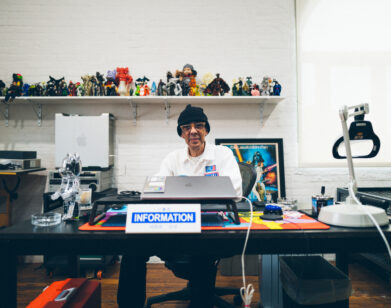let's have a kiki
Lady Bunny and Linda Simpson Contemplate the Future of Drag
Sometimes, in order to move forward, you have to look back. Linda Simpson, the New York City nightlife legend has done just that with her photo book The Drag Explosion, a visual bible documenting New York’s momentous drag scene of the ’80s and ’90s. As drag exits the fringes of normativity due to the influence and impact of RuPaul’s Drag Race and the art form evolves along with the newer generations, books like The Drag Explosion (out now on Domain) serve as a roadmap to where drag has been and where it can go, not only as a form of self-expression but as a community of creative beings. On a recent Friday night kiki, Simpson got on the phone with her friend, the legendary Lady Bunny to talk about the new book, nostalgia for New York’s legendary nightclubs, and where drag goes from here.
———
LINDA SIMPSON: So, Bunny, do you remember the first time that you met?
BUNNY: I need for you to remind me of who you are and how you got my number, sir.
SIMPSON: Do you remember the specific incident?
BUNNY: I’ve scrubbed it from my brain, it was horrific. At the Pyramid Club in the ’80s.
SIMPSON: I don’t know if it was the very first time I met you. Remember for Halloween once, there was a haunted house down in the basement? You had on a bunny mask and I remember us sitting at the bar and it was a little ridiculous.
BUNNY: I discouraged you from trying drag.
SIMPSON: I was very in awe of the drag queens that were at the Pyramid. For instance you, Tabboo!, Hapi Phace, Sister Dimension, Hattie. But yes, you are older in your drag career than me.
BUNNY: I’m glad you made that specification. A lot of the Pyramid queens are legendary. D-Lite, RuPaul, Anohni, formerly known as Antony and the Johnsons, all came out of that scene. Very creative, very underground. Less celebrity impersonation and more becoming your own character. Lypsinka staged early plays there, Joey Arias, John Kelly, many who have passed away like Baby [Gerber], and Hattie Hathaway, of course.
SIMPSON: Ethyl Eichelberger.
BUNNY: Ethyl Eichelberger, who we were in awe of because her plays would be produced and well-reviewed by The New York Times. At a time when we were go-go dancing on the Pyramid bar with her. It showed us where drag could go.
SIMPSON: That was the drag scene that I became familiar with and that I wanted to be part of. I didn’t start doing my party at the Pyramid until 1990. I have been doing this slide show for the past several years called The Drag Explosion. It tells the history of drag scenes from the late ’80s to the early ’90s. It’s all photos that I took, just for fun. In your reflection, Bunny, you of course talk about the era—the big clubs, and how great the music was back then.
BUNNY: [Laughs] A reflection? Is that what you call my masterpiece? If someone did ask me what could kids today learn about the ’80s and ’90s, it’s that the scene was always intertwined with dance music culture. I don’t mean Top 40. We ran to the dance floor. We didn’t even check our coats. That was always a big part of the Pyramid Club with Sister Dimension as the reigning DJ. She is the reason that I started DJing so long ago.
SIMPSON: That was, of course, the era of big clubs and huge dance floors. People didn’t go out unless they planned on dancing.
BUNNY: It wasn’t really until the 2000s that every gay club almost played top 40. We felt that we were part of something special that just belonged to that moment and we loved everything about it from the drag celebrities that emerged. We’d come, you from Minnesota, me from Atlanta, and found this magical place.
SIMPSON: There’s a picture of you in the book where you’re talking to the reporter from Entertainment Tonight. That was up in the tunnel. You were doing something on stage, but it was this big moment when drag was bursting through.
BUNNY: There are all kinds of rare photos in the book. Even one where I was thin.
SIMPSON: You were racing around a lot, so maybe you were getting a lot of exercise. Hosting at those big clubs meant walking or running across these football field-sized dance floors.
BUNNY: My liver was getting a workout, I know that.
SIMPSON: Do you find that it’s ridiculous for us to be talking about the past as much as, at least I do? Is it too silly to be so nostalgic?
BUNNY: I think there’s a hunger for these scenes. People are looking online to see Nelson Sullivan’s videos of the scene, of New York, of club personalities. A pre-fame RuPaul, the Pyramid Club, whoever. Sylvia Miles, who is someone that was connected to the earlier Warhol scene and to Hollywood. A lot of clubs are lacking something that we had in spades back then.
SIMPSON: I don’t want to brag or say that it was the best era ever, but it was a very exciting era. I think compared to today’s club scene, at least in New York, which seems so watered down, it was pretty spectacular. There were a lot of people who would move to New York just to be fabulous. They could get away with it back then.
BUNNY: If you live in New York now, you’re going to be working. It’s going to be harder for them to do experimental drag performances and art scene stuff that we saw at the Pyramid. I’m not saying we were the artsy-est. Some of it was like Anohni’s, or Antony and the Johnsons, they were really out there with Floyd and Constantine.
SIMPSON: Bunny, did you hear that Goddess Bunny died, by the way?
BUNNY: Yes I did. She was outrageous.
SIMPSON: Did you ever meet her?
BUNNY: I did. Vaginal Davis is the one who’s got the great stories about Goddess Bunny.
SIMPSON: Yeah, that’s how I found out about her, to begin with.
BUNNY: She was a riot. Trust me.
SIMPSON: Bunny, this question gets asked a lot of drag queens in general, especially of our stature. Drag is such a cultural phenomenon now, at this point, especially with RuPaul’s Drag Race leading the way. How do you feel seeing drag evolve from fringe to mainstream popularity?
BUNNY: Sometimes I benefited from this and it’s great. But as you say, it’s mainstream. I was just talking about great music and gays who sought out dance culture as many generations did, and I’m looking a little bit at the first episode of season 13 of Drag Race and they were lip-syncing to “Call Me Maybe.” I don’t think I would pay to see anyone lip sync to “Call Me Maybe.” I’m not interested in that. Drag was subversive and now it’s not. I go on tours with the Drag Race queens and love them, I’ve spent the day tweeting jokes at Bianca and her followers. I love to be included in it. The individual queens who become known on the show can be much more interesting doing their own acts than I see them be on the show. We don’t come from that generation. As I said, I prefer to see the Drag Race queens doing their acts. Most of the time.
SIMPSON: It’s a double-edged sword. But the fact is drag is mostly about entertainment, and the mainstreaming of drag has meant that there are a lot more opportunities for people to make money, to make livings. I wouldn’t want to deny people’s work. In addition to RuPaul’s Drag Race, drag has broken into the mainstream in other ways, too. And there is that expression: a high tide raises all ships.
BUNNY: It is safe. I wonder if the emphasis hasn’t gone from performance.
SIMPSON: I think that in The Drag Explosion book what’s interesting is that it was a time when drag was not very careerist. That’s why most of the people in the book were just doing it for fun. Back then I think it was more about personal expression and just having fun with it.
BUNNY: There were also a lot of super creative players who never had an act but who just brought something—it wasn’t a stepping stone to even a job, much less fame. Sometimes they would have the very best looks.
SIMPSON: In some ways, drag doesn’t change a lot. What do you think is next for drag in America?
BUNNY: Lady Bunny. Only.
SIMPSON: The next big drag thing will probably be something that comes from left field, some pop music sensation or some actress or something like that.
BUNNY: Pabllo Vittar, from Brazil. The funny thing is, trans performers were always popular in our world. I’m glad that everyone else has caught up and is now celebrating them along with us.
SIMPSON: I hope Drag Explosion reflects that, too. That there were drag queens and trans people and all sorts of people under one umbrella, partying together.

